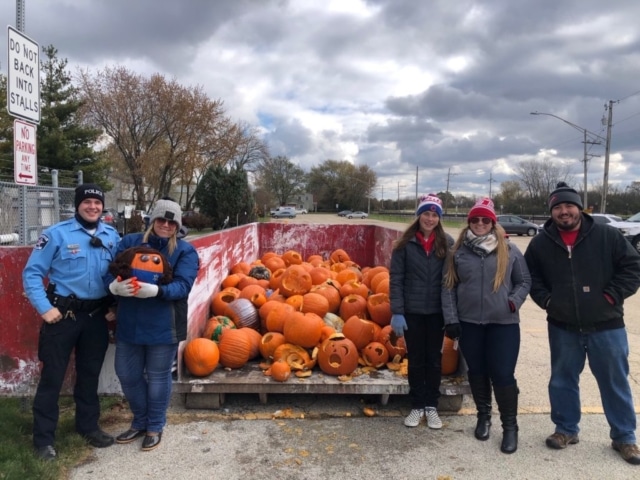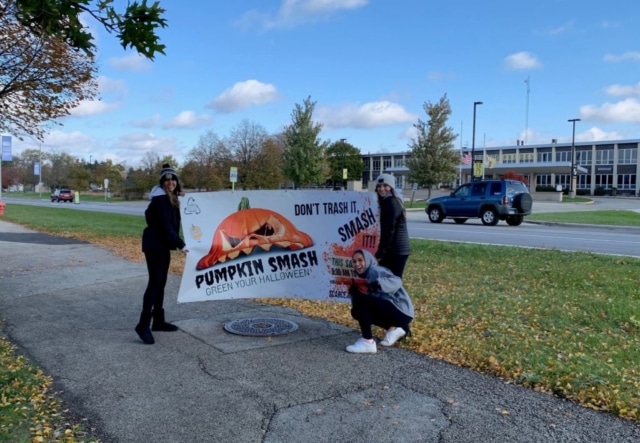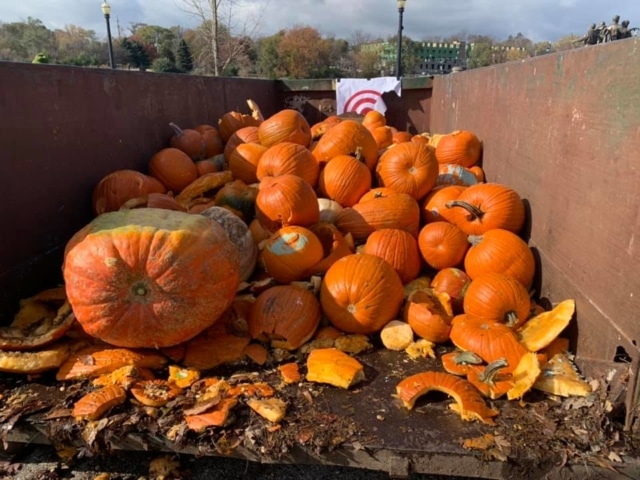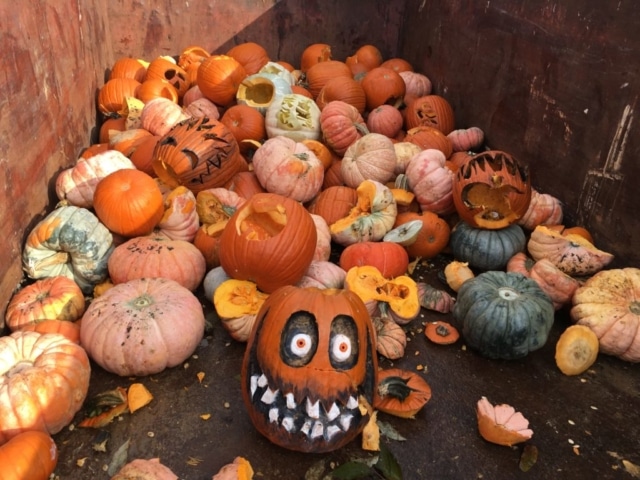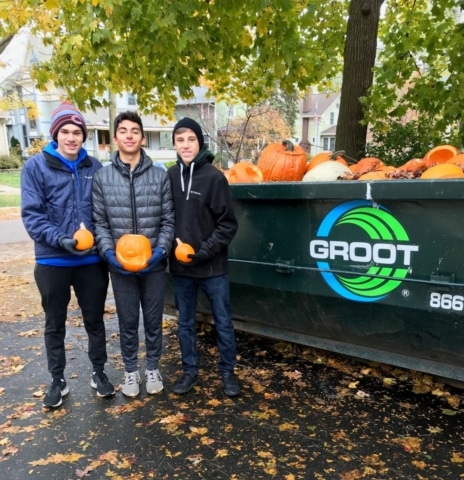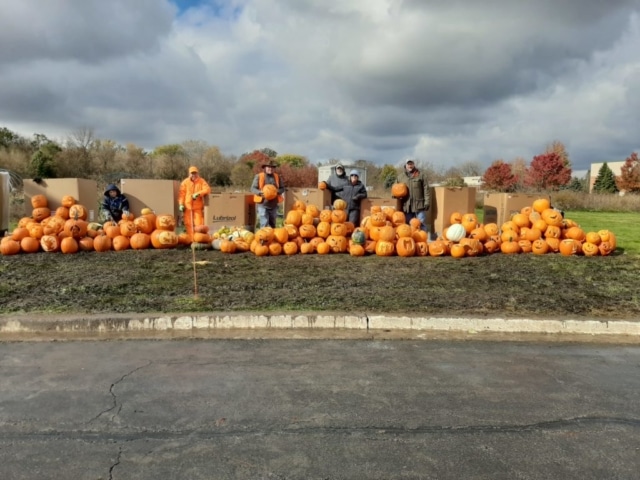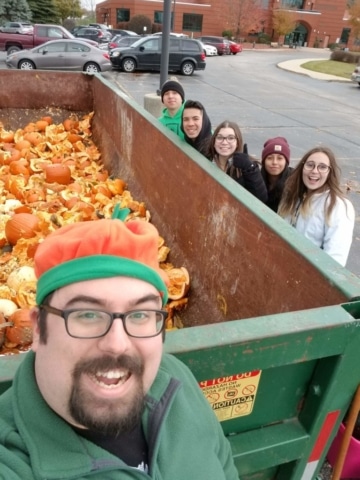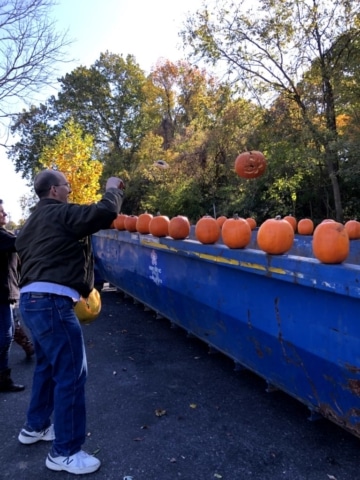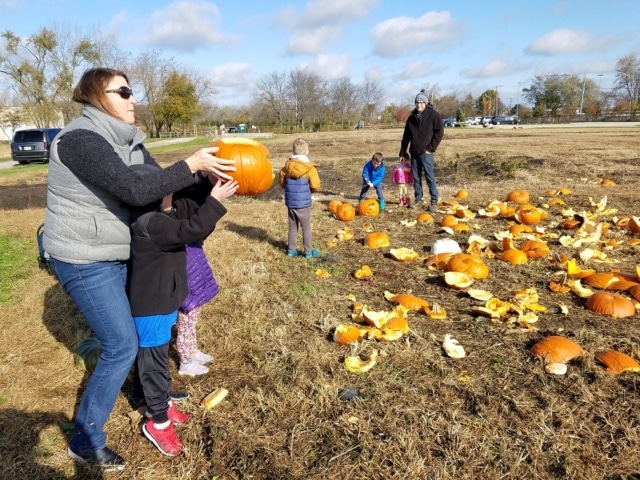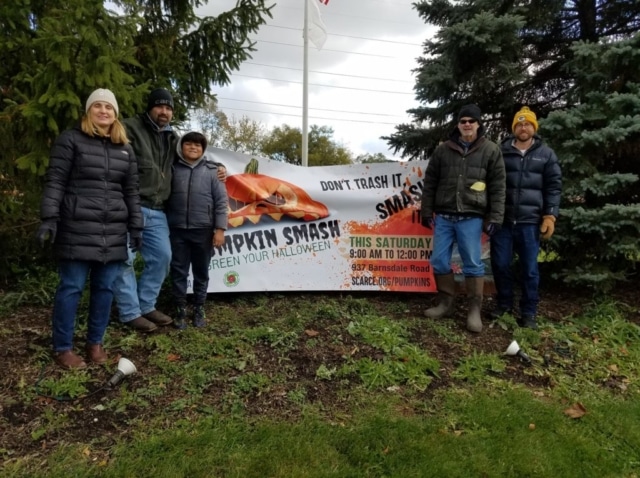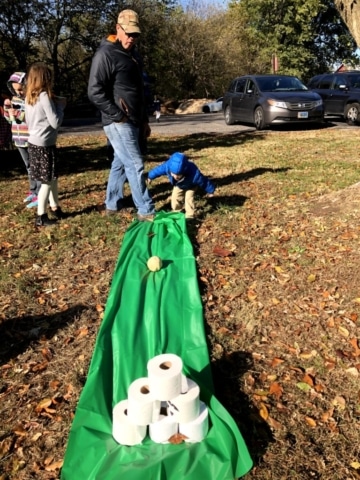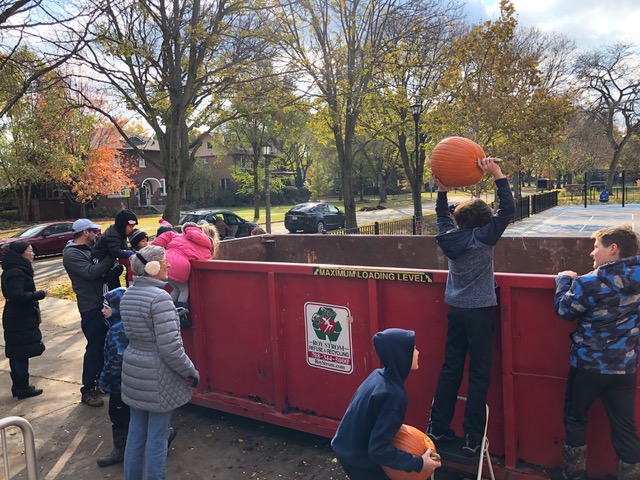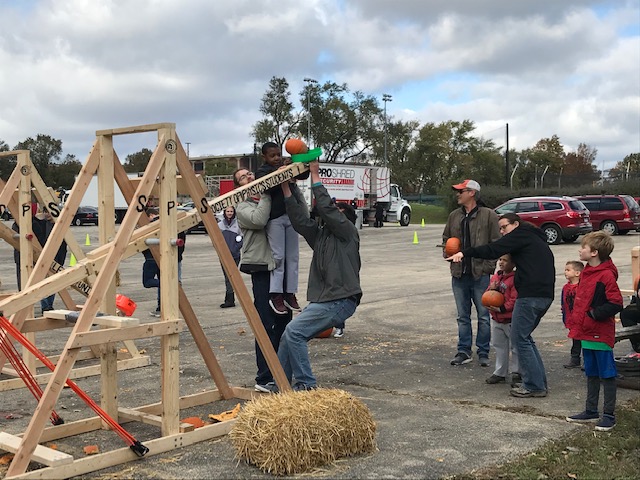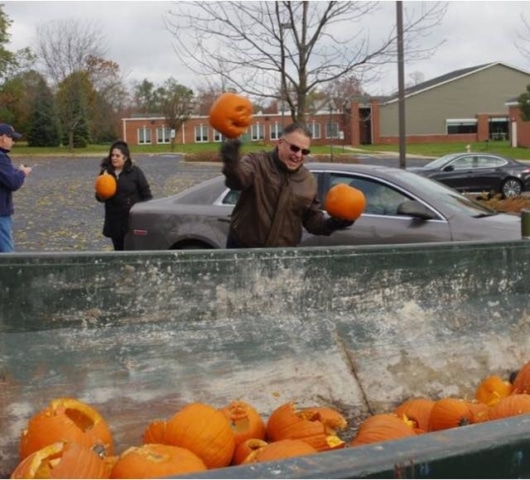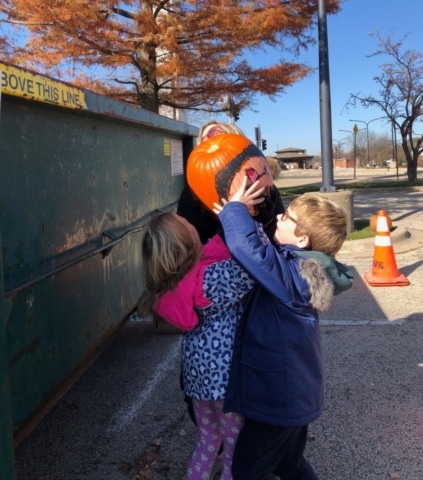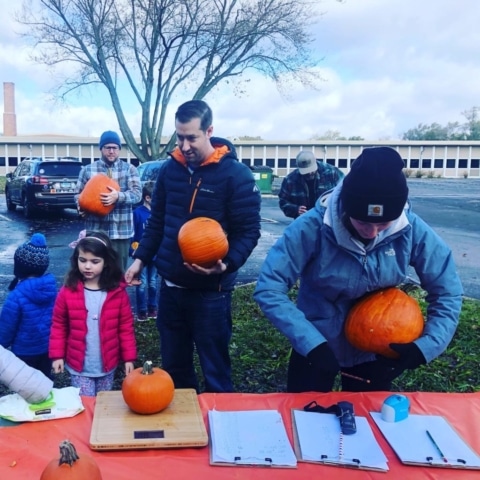News,
6th Annual Pumpkin Smash Helps Communities ‘Green’ Halloween
Nov 26 2019
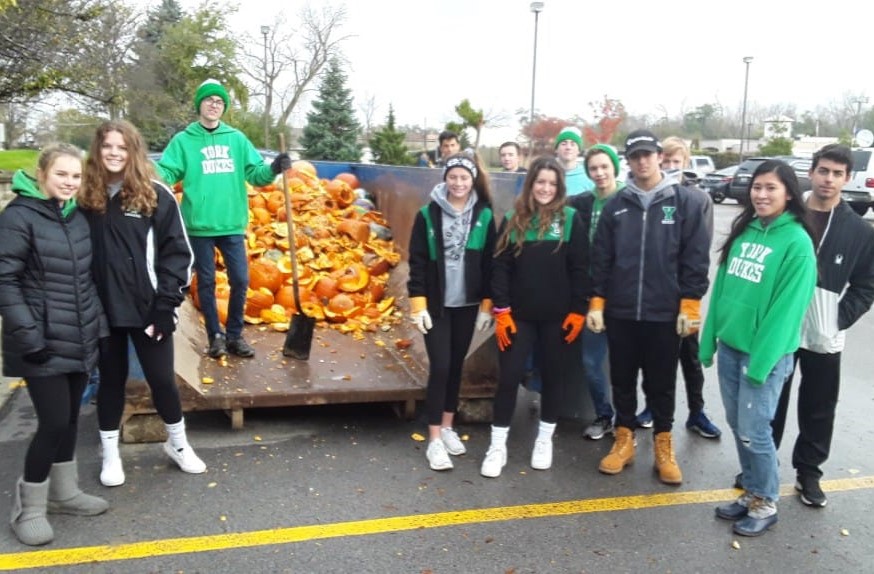
The 2019 Pumpkin Smash took place on Saturday, November 2nd in 47 locations across Illinois. The word about the Pumpkin Smash is spreading each year and more places across the country and even across the ocean are reaching out for advice on getting started. This year, an additional four sites were hosted in cities outside of Illinois. It’s great to see how the Pumpkin Smash gets communities excited about sustainability! See our results below.
A massive thank you to all the municipalities, schools, organizations and haulers that make the Pumpkin Smash happen in their communities – it wouldn’t happen without their commitment to greening Halloween! Save-the-date for November 7th, 2020.
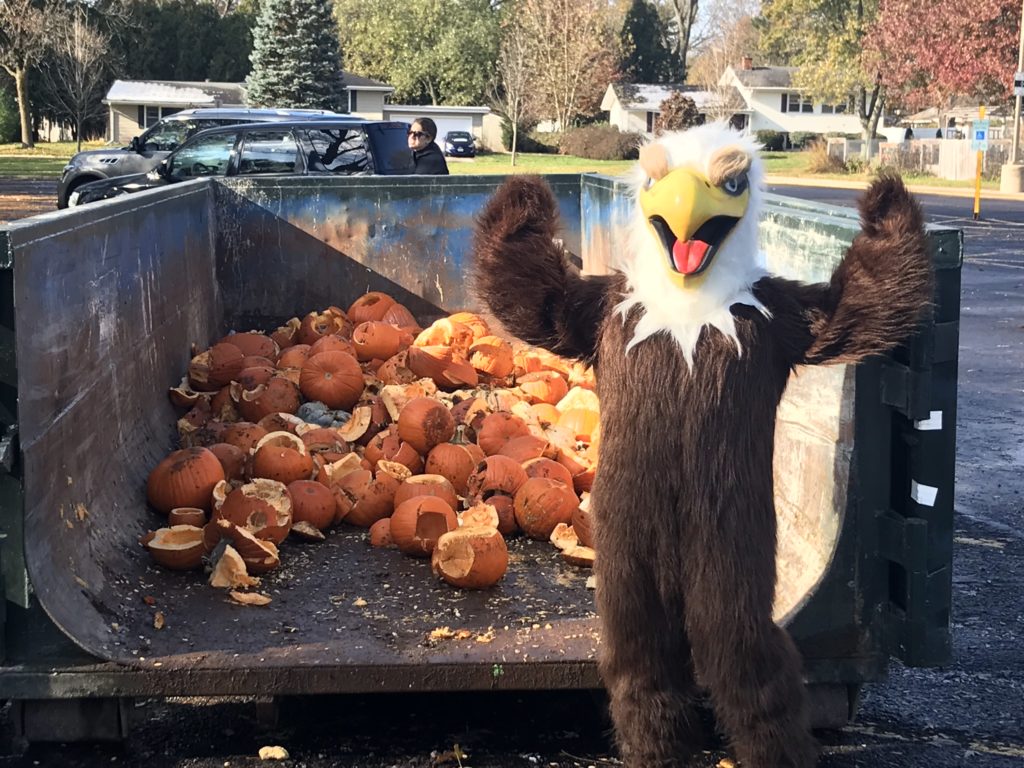
Elmwood Elementary, Naperville, Illinois 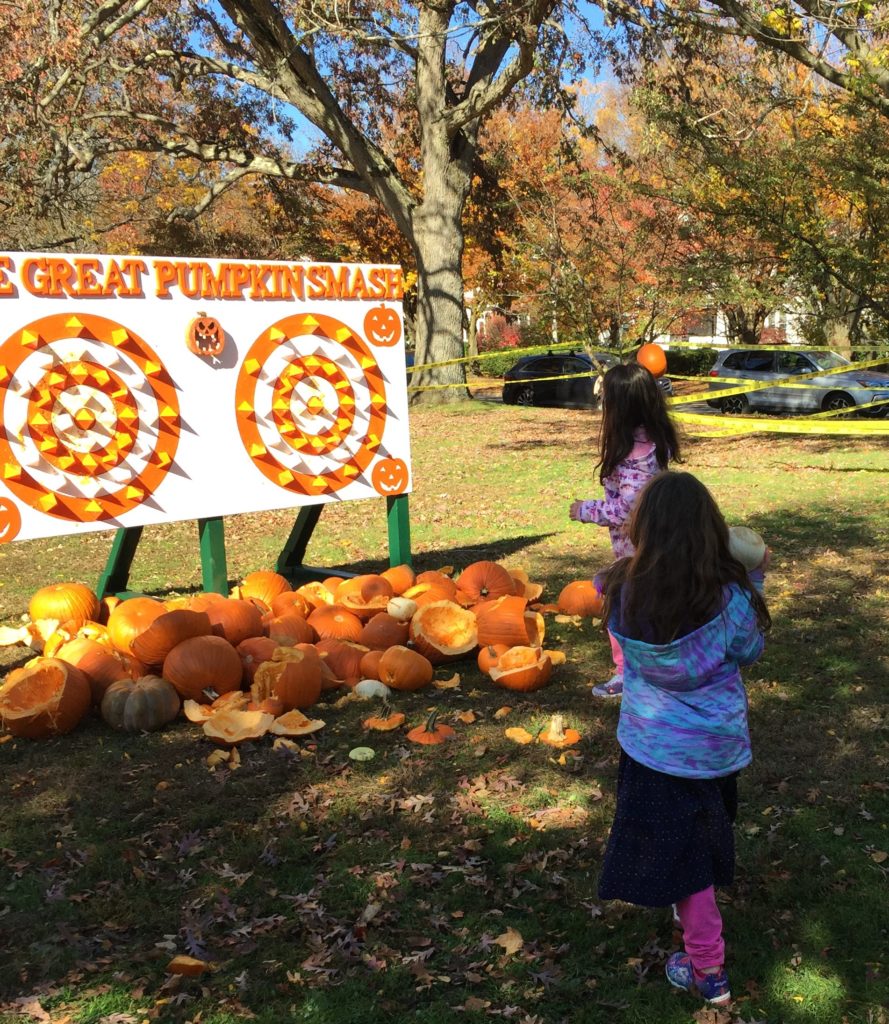
In Newton, MA attendees tried their hand at smashing their pumpkins on a specially made target. 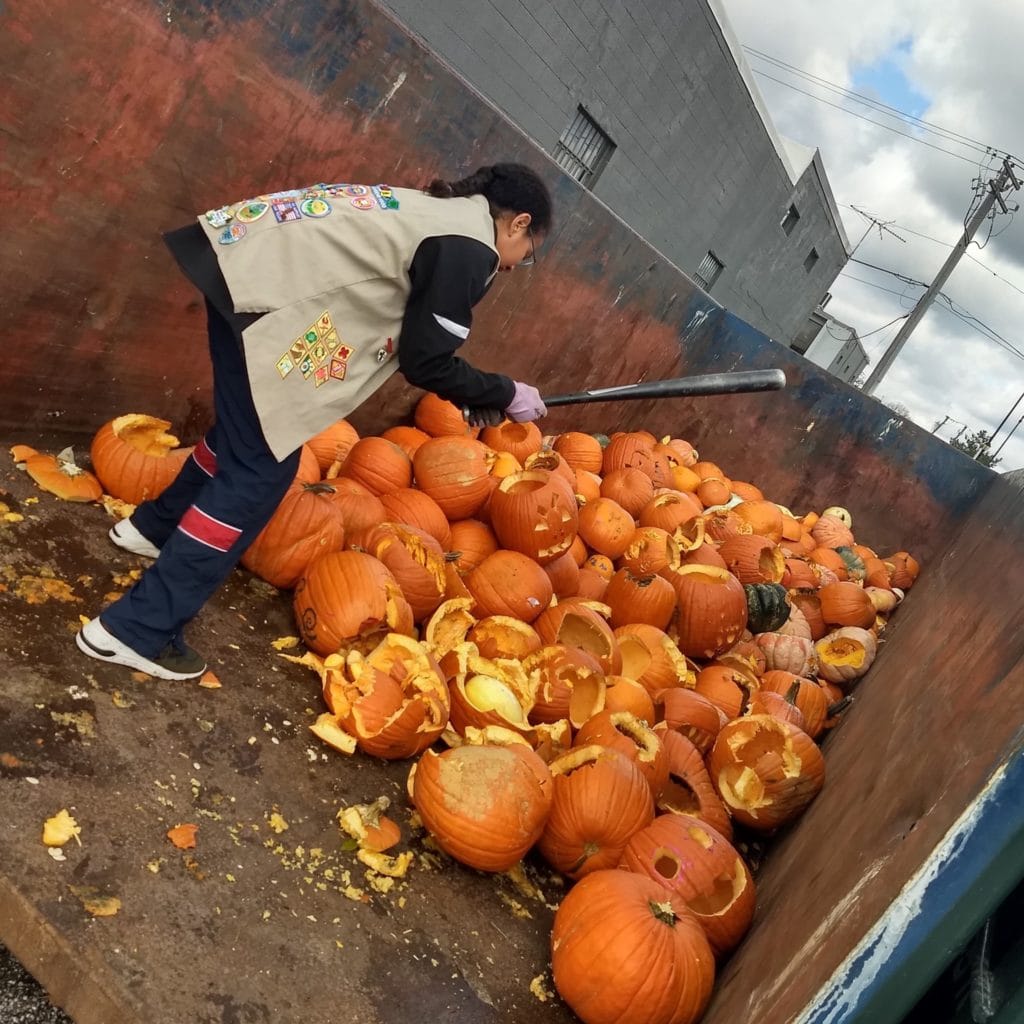
Girl Scout Troop 51988 dropped off and smashed 50 pumpkins from their own neighborhood collection in Glen Ellyn, IL.
How many pounds of pumpkins were composted?
Together, we diverted over 123 tons of pumpkins from landfills.
Now in it’s sixth year greening Halloween, the Pumpkin Smash has composted over 377 tons of pumpkins. Composting all those pumpkins provides a reduction in greenhouse gas emissions, less leachate to manage, and captures water and nutrients to recharge our soil. It also represents a lot of space in our landfills better used for items with no other option for disposal. Not only has it helped the planet, it’s also helped spread awareness to thousands of residents about the benefits of food scrap composting.
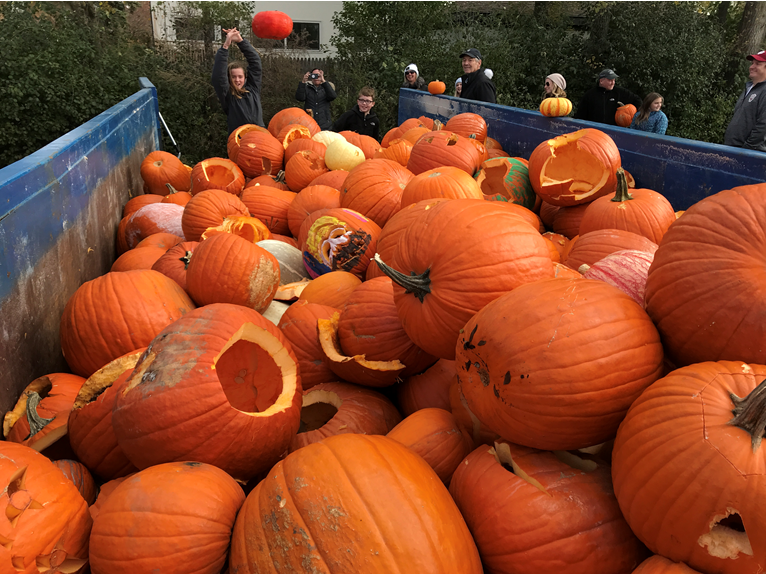
Pumpkin piled high in Western Springs, Illinois. 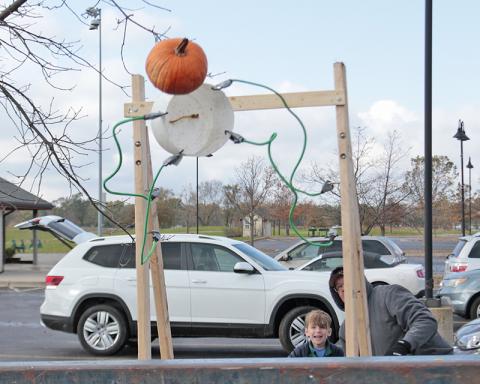
In Flossmoor, Illinois, smashers launched their pumpkins with a slingshot 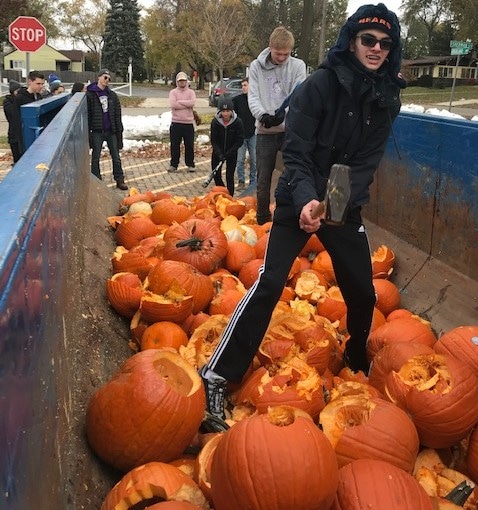
Students smashing at Downers Grove North High School in Downers Grove, Illinois.
How much water did we rescue?
Pumpkins are about 90% water. All that water can either be a problem (leachate in a landfill) or an asset (returning to the soil when composted). From the 123.6 tons of pumpkins we collected that comes to 26,580 gallons of water! That’s equivalent to the water used for…
- 8, 860 toilet flushes – or more if you have a super-efficient low-flow toilet
- 1,063 loads of laundry – that’s enough to last you over 10 years if you do two loads a week!
What was the impact on greenhouse gas emissions?
When decomposing in a landfill, organic waste such as pumpkins produce methane – a powerful greenhouse gas. When done properly, composting organic material emits little to no greenhouse gases and helps to sequester carbon in soil. Further, most compost sites are closer than landfills, saving fuel in transporting the pumpkins. By composting 123.6 tons of pumpkins, we avoided emitting 88.9 metric tons of CO2 equivalent – roughly equal to…
- taking 19 passenger vehicles off the road for a full year
- electricity used by 15.5 homes in one year
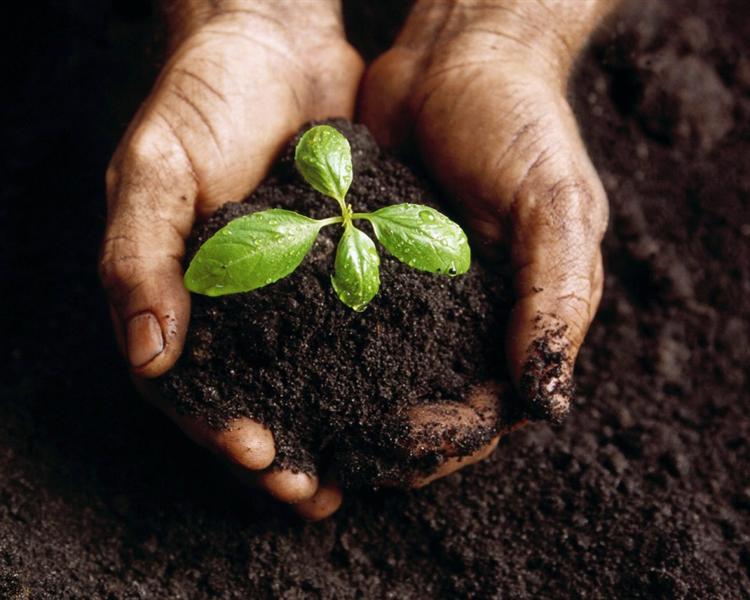
Close the Loop: Ask for Food Scrap Amended Compost
Composting our organic material is only the first half of the sustainability equation. Once food scrap compost is made, it must be used in order to reap the full benefits outlined above. Luckily, food scrap amended compost is an incredibly diverse and nutrient-dense soil amendment (aka fertilizer) making it a no-brainer. Be sure to seek out food scrap amended compost for your yard, garden, and house plants. Ask for it from your local landscape or garden center – and if they don’t have it, ask them to begin carrying it. If you live near Glen Ellyn, you can pick some up at SCARCE’s annual Growin’ Green Garden Market in May.
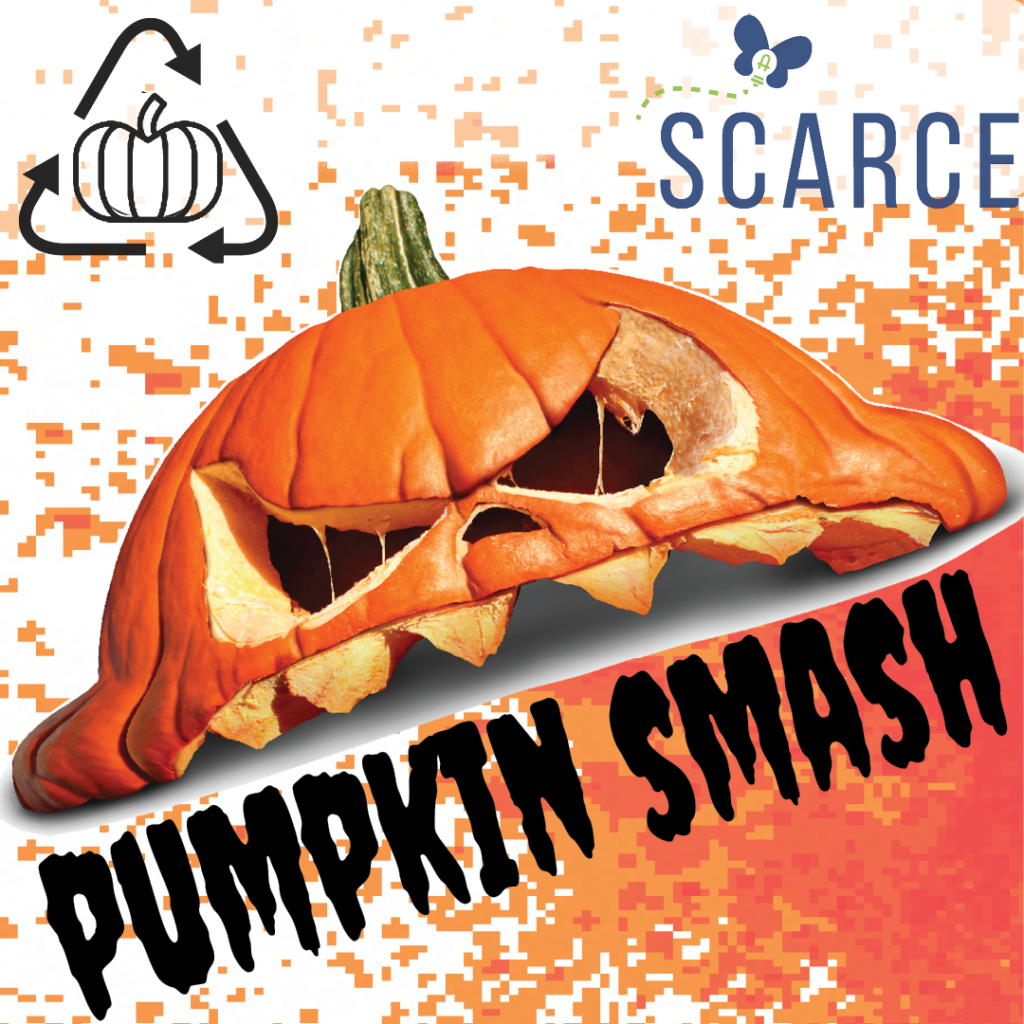
Thank you again to all our hosts, volunteers, and community members that made the effort to green their Halloween. See you next year for another smashing time at the Pumpkin Smash on November 7th, 2020!
Check out more of the fun:
